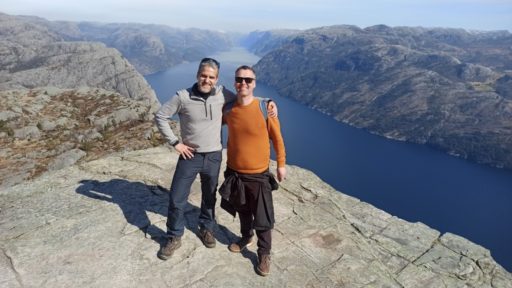18/06/2025
Welcome to Stavanger, a Norwegian city of great importance, not only because of its oil-driven economy, but also due to its growing popularity as a tourist destination. One of its most iconic landmarks is the Pulpit Rock, dramatically perched above the Lysefjord.
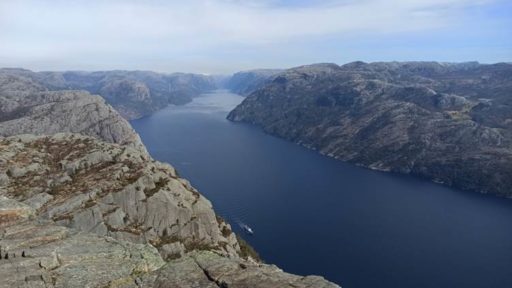
This trip, though not entirely disconnected from tourism and energy, has a different purpose. Stavanger sits on the coast and Norway’s coastline is home to another globally recognized economic activity: salmon farming. Think of any other fish… Can you name one so closely linked to a country? Say “salmon” and most people will instinctively add “Norwegian.” Though salmon is not raised only here, Norway undoubtedly leads the industry.
This journey has several goals. One of them is to understand how salmon farming operations track and monitor the discarded, from early stages (around 100–200 grams) to commercial size (typically 4–6 kilograms, though leaning more towards 4 kilograms). Are these tracking methods robust enough to paint a reliable picture of these discards? And if so, can they be applied to other aquaculture sectors?
A deeper, more conceptual question also emerges: how can we reconcile the EU’s definition of food loss, largely designed around crops like lettuce, with the life cycle of a salmon? Adapting the concept to aquaculture could open the door to broader, more inclusive strategies for tackling food losses.
Let’s dive into one fascinating biological twist. Salmon, from an early stage (around 100–200 grams), undergo a transformation that allows them to live in both freshwater and saltwater environments. This stage is known as smolt. As a parent of young children myself, I can’t help but envy that kind of adaptability to such drastically different conditions. Some of us, after all, may never quite manage to adjust to life far from where we were born.
Young salmon are reared in pristine waters, often near rivers and nestled in scenic fjords. The sacrifice of visiting these breathtaking spots… well, someone’s got to do it! (Here are a few photos to prove I was working.
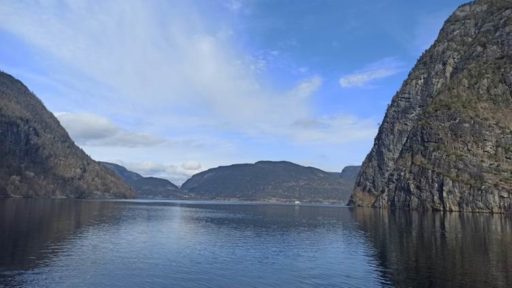
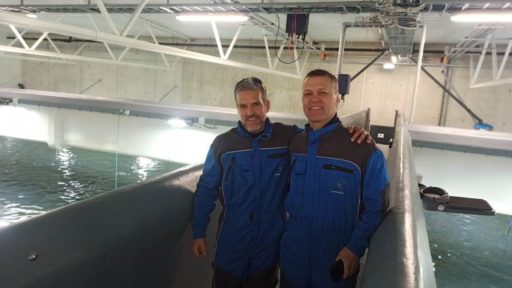
Inside these “pools,” nearly every parameter is controlled: temperature, salinity, feeding schedules… What’s interesting is that there isn’t one standard recipe. Within the constraints of regulation each company has its own strategy, often grounded in accumulated experience and experimentation.
Among so much technological sophistication, what struck me the most was the process used to record losses: entirely manual. Dead fish are counted by hand and then logged into a computer system. These aren’t considered “food losses” yet, because they haven’t reached the “ready to be harvested” stage, but they are production losses, and understanding them is key to seeing the full picture of inefficiencies in the food chain.
And now, let me introduce what I believe is the “core” of this case study. Picture your average Norwegian guy; let’s call him Ragnar (greetings from a TV series Vikings superfan!). Every day, Ragnar heads to the pen with a net to collect the dead salmon. The design of the cages is clever, through engineered currents, the dead fish naturally sinks toward one specific spot.
Once there, Ragnar nets them out, counts them, and tosses them into a bucket. From there, they’re funneled through a pipe to a central tank where they are eventually transformed into ensilage, a hygienic sludge that can be valorised. That sludge is often used for bioenergy, but proteins and oil are also recovered and can be used in pet food. There’s still room for improvement. In fact, researchers are already exploring ways to extract specific valuable compounds from it.
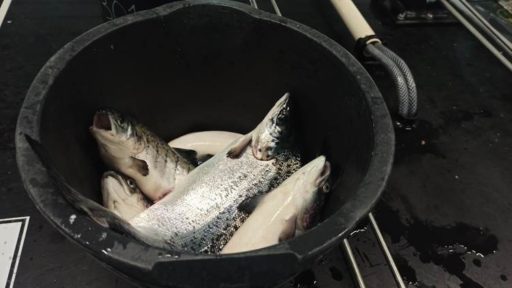
Now back to Ragnar. Before he dumps the fish into the tube, he counts them, say, 5 today, and then goes to a company computer to log that exact number into a specialized software. And here’s the million-dollar question: what incentive does Ragnar have to report 5 and not just 1? For those of us from more Mediterranean cultures, this question practically asks itself.
The integrity of the system rests on a combination of factors: supervision by public authorities (monitoring every farm the number of smolt fish that goes in and then the number of food fish that are harvested); farmers own interest in closely monitoring the fish health and catch any potential disease outbreaks early on; inter-company trust (“if you mess up, you tarnish us all”), and, perhaps most crucially, a Nordic culture rooted in institutional trust and transparency.
For a post-smolt farm the current estimates for smolt losses at around 1.1%, including the transport of post-smolt to the marine cages. A leading cause of losses are Piscine orthoreovirus (PRV), a virus that is still not well understood.
To learn what happens after salmon exceed 1 kg, you have to hop on a boat and head to the coastal facilities: large marine cages where the fish are in constant contact with the open sea. This comes with both benefits and risks. Among the latter is the accumulation of organic waste below the cages. Improved feeding technology and relocation to areas with stronger currents has reduced this issue. However, the sea and currents bring their own dangers to the salmon because of exposure to pathogens. The most serious is the sea lice (Lepeophtheirus salmonis), a parasite responsible for significant mortality due to the aggressive treatments used to combat it.
The saying that the remedy is worse than the malady is fitting in this case. Regulatory constraints enforce producers to keeping the sea lice occurrence in farms below a threshold level. The chief aim of this regulation is not to reduce the exposure of sea lice to farmed salmon. The real reason is to protect the wild salmon from sea lice exposure when the wild salmon swim in the vicinity of salmon farms either because they are leaving the rivers and heading towards open sea or when swimming back to the rivers to spawn.
As the salmon grow, welfare and health challenges increase. At the ideal market size, typically 3 to 6–7 kg, the fish start suffering from poor blood circulation. There’s also a demand from some Asian markets for salmon that weigh nearly 10 kg. While this promises high prices, the downside is an increase of losses, turning what could be food into waste.
Just like with fruit, aesthetic and size preferences from consumers can generate food loss, whether it’s an orange or a salmon. When you add up all the causes, current total losses are estimated at around 17% of production. The person who guided us during the visit and is directly involved in the daily operations of salmon farming estimated that, on average, around 50 salmon die per cage per day. Thus, if a site has 6 cages, each fish weighing 6–7 kg, the volume of daily food losses per farm is staggering. Despite the absolute quantity of food currently being lost, this would represent approximately 0.03% of total production lost on a daily basis in percentage terms.
Again, despite some innovations like visual scanning and AI-assisted tracking, the process still often comes down to manually logging losses. And once more, we return to the central challenge for Ragnar: what are the incentives to report accurate losses to understand the problem? Could this system be adapted to other sectors or regions? What would it realistically take for you to make it work (without the use of superpowers)?
Ragnar finds himself at the heart of a system that must be virtuous, one governed by robust regulation and verification mechanisms, where controls prevent malpractice, and where no “Loki” can manipulate the figures. It has to be a system built on trust, between companies and authorities, and within the companies themselves. Only through such a foundation can something seemingly simple, yet complex in its facets, be achieved: that Ragnar accurately observes and reports the reality before him. This system would ensure that the resources required for quantification are not excessively expensive or burdensome for the company, thereby removing budgetary barriers that might otherwise prevent a thorough analysis of the problem. At the same time, the system allows the farmers to collect an important indicator of fish health for farms that typically stocked with a few hundred thousand to over a million fish.
Much like Ragnar Lothbrok on his quest to lead the Vikings, we now face a challenge, not one of swords or shields, but of building a system that allows us to deliver a clear and rigorous diagnosis of the problem, with human intervention at its core to ensure accurate counting and reporting to the authorities. Ragnar did not expand his world only by fortifying his defences, he did so by daring to build bridges. In the same way, a reliable system to understand salmon losses must be rooted in a shared sense of purpose.
Ragnar understood, before many others, that progress required more than conquest, it required understanding. His alliance with Athelstan, a Christian monk from a world his people scorned, allowed him not only to discover new lands, but also new ideas. In much the same way, a shared vision between companies and public authorities around salmon loss enables us to grasp the problem in its full complexity. By bringing together diverse perspectives, analysis becomes richer, solutions become stronger, and everyone, the industry, regulators, and the environment, stands to gain. As in Ragnar’s time, only those willing to listen to the other can build a future that lasts.
In Ragnar’s spirit of unification, a recent partnership among Norwegian salmon producers, facilitated by AquaCloud, have led farmers to share detailed data on production and losses with each other, researchers and other stakeholders. AquaCloud’s vision is “...to make fish farmers better, together, driving sustainable growth through data sharing and value derived from data”. By leveraging fine-grained data from each silo (i.e., farm) increase the opportunity to gain insights on the complex interplay between technology and environment in salmon farming. However, the backbone for food loss measurements remains the regulatory system for monitoring and collecting data at each individual salmon farm. It is this system involving the Directorate of Fisheries and The Norwegian Food Safety Authority that enables the type of initiatives as evident from AquaCloud.
Thus, this system continues to evolve, striving to achieve the necessary balance among the different stakeholders involved. As far as we know, new policy proposals will continue to emerge, alongside ongoing efforts to find value in current sludge streams and to further reduce the sector’s environmental footprint in the region. In this pursuit, trust and collaboration remain vital, because history reminds us, even in myth, that when balance is betrayed, the consequences can be brutal. The blood eagle was not only a punishment for treachery, but a symbol of what happens when a shared code is broken. Let us ensure that what we build together is governed not by fear, but by transparency, innovation, and mutual responsibility.
How do you see the current system? What improvements would you suggest, keeping in mind budget constraints (and the absence of superpowers)? And to what other food commodities or regions could this model potentially be adapted?
